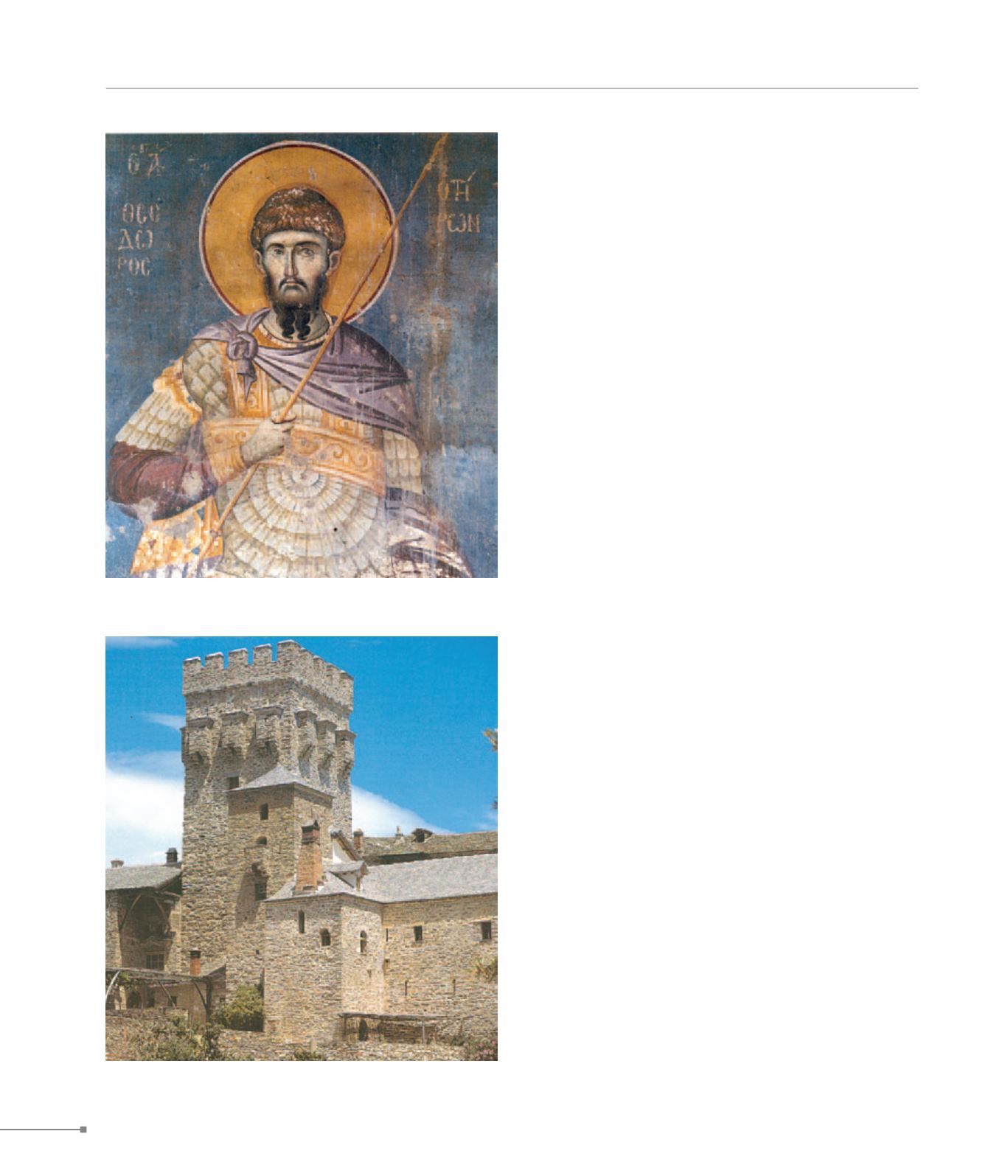
Iveron Monastery.
Stavronikita Monastery.
MACEDONIA
118
83. Karyes, Protaton, mural painting (Καρυές, Πρωτάτο, τοιχογραφία)
84. Stavronikita monastery, tower (Μονή Σταυρονικήτα, πύργος)
81.
Iveron Monastery.
This was founded in the late 10th c., on the site of the ear-
lier monastery of Clement, by Ioannis Tornicius the Iberian
(i.e. Georgian). The original phase of the catholicon, athonite
type with double narthex and chapels, dates from 980-3. Its
present form is a result of the reconstruction it underwent in
1513. From the original decoration the floor survives with ex-
quisite marble inlay. In the Prodromos chapel remains of an
earlier church featuring fragments of wall-paintings (10th c.)
have been detected and investigated.
82.
Koutloumousiou Monastery.
The monastery, lying at a short distance from Karyes, has
occurred in written sources since the 12th c. In 1393 it was
declared a patriarchal stavropegic monastery. Due to succes-
sive restorations and reconstructions, no Byzantine structures
survive at the complex.
84.
Stavronikita Monastery.
The monastery was founded in the 16th c. by the ecumenical
patriarch of Constantinople, Jeremiah I, upon the remains of
an earlier kathisma. The structures that have been preserved
are of the Byzantine period, with the exception of the initial
phase of the monastic tower dating from the early 11th c. Due
to its key location, the tower also served as a vigla.
83.
Karyes.
The Protaton church, the seat of the metropolis of Mount Athos,
was founded in the 10th c., a three-aisled, timber-roofed ba-
silica with narthex. After 961, Aghios Athanasios the Athonite
reconstructed the church so as to ensure a proper place for
the choroi to stand, by turning it into a cross-in-square de-
sign without a dome. From the original decoration, the carved
marble altar screen is preserved. The church underwent new
alterations in subsequent periods before it achieved its current
form. Around 1290 the Protaton was decorated with exquisite
wall-paintings by icon painter Manuel Panselenos. At Karyes
lies the Cell of Ravdouchos, which belongs to the Pantokra-
tor monastery, and features parts of the earlier Ravdouchos
(or Ravdas) monastery catholicon, originally a three-aisled,
timber-roofed basilica, and its tower, with fragments of wall-
paintings dating from circa 1200.


